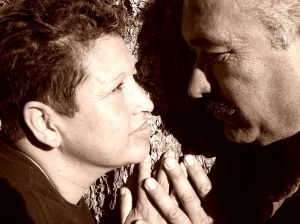Health Disparities Pose High Cost for American Economy
Researchers commissioned by the Joint Center for Political and Economic Studies released a report Thursday, calculating the combined costs of health inequalities and premature death in the nation to be $1.24 trillion between 2003 and 2006. During that time, minorities spent nearly $230 billion in excess medical care costs. The Joint Center is a Washington, D.C.-based think tank that focuses on the concerns of African-Americans and communities of color.
“There is no question that reducing the health disparities can save incredible amounts of money — more importantly it can save lives,” said U.S. Health and Human Services Secretary Kathleen Sebelius, adding that reducing health disparities is high on her administration’s agenda. “There’s no single explanation for the disparities outlined in today’s report. And there’s no single solution either. But we know that the two biggest contributors to these disparities are a lack of access to insurance and a lack of access to care.”
Researchers from Johns Hopkins University, George Washington University and the University of Maryland conducted the report.
“We divided the (study) sample into groups and then we asked which ethnic group has the best health status, sometimes it was Whites or some other group,” said Dr. Thomas LaVeist of Johns Hopkins University, one of three report authors, “We consider it to be a disparity if other groups weren’t doing as well in a category.”
Citizens of color are disproportionately burdened by disease yet have limited access to health services, resulting in excessive medical expenditures and lost potential productivity, said Dr. Brian Smedley, vice president and director of the Health Policy Institute at the Joint Center.
Of the total excess direct medical cost of health disparities, African-American expenditures accounted for more than 59 percent, while 35.7 percent and 5 percent are attributable to Hispanics and Asian-Americans respectively. Overall, minorities require more care to maintain their health and since more than half of the uninsured are people of color, the costs are higher for everything from emergency room visits to prescription drugs, according to the study.
Using government vitality and conservative medical cost statistics from the World Health Organization, researchers measured worker productivity, absenteeism and in case of death, forgone wages and lost tax revenue among other things to estimate how much the economy lost due to disparities. They then adjusted the results to the 2008 inflation rates.
Without primary care or other adequate health resources, minorities often defer treatment or forgo preventive care until it’s too late, experts say.
“We are using emergency rooms and services to try and access health care inefficiently and expensively—and often dangerously because people are sicker when they access those services,” Sebelius said.
African-Americans are more likely to die from conditions like heart disease, breast cancer, and strokes as compared with non-Hispanic White men. Hispanics are less likely to develop some diseases — like prostate cancer — but they die more often from them, according to statistics from the government’s Office of Minority Health.
LaVeist said chronic conditions are more prevalent in minority communities because of their location. Fewer supermarkets and healthy food options, as well as environmental hazards, are barriers to wellness.
“If I could suggest one thing that would have the greatest impact, it would be to offer high quality education to every child,” LaVeist said. “That would do more than anything we can do in the healthcare system.”
Drexel University’s Dr. Dennis Andrulis outlined areas where health reform proposals succeed and fail to address disparities. The expansion of Medicare eligibility standards will provide more affordable access while bills that eliminate bi-lingual and other language service programs will limit it.
“Accessibility, affordability and accountability, those are the three A’s of this discussion,” Clyburn said.
Source: Arelis Hernandez













